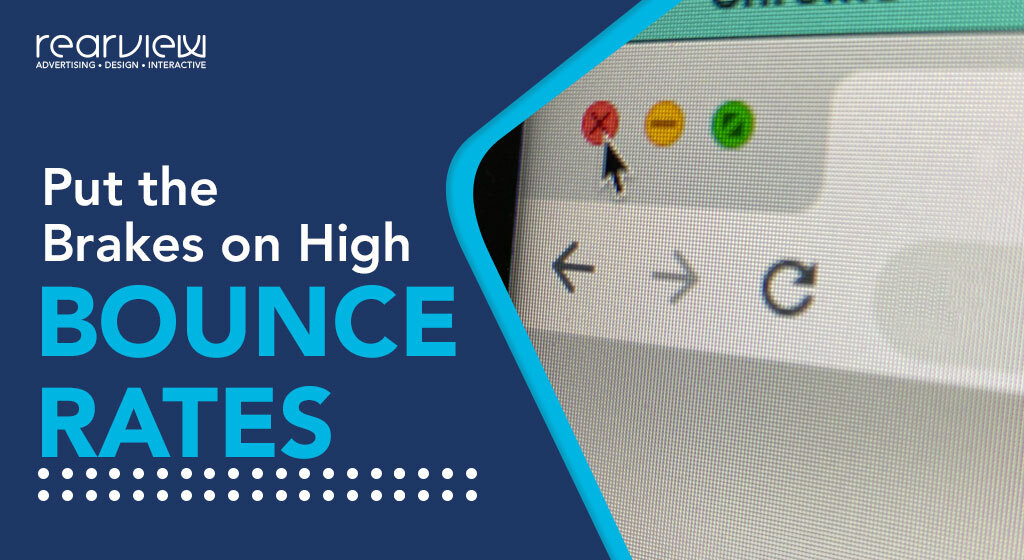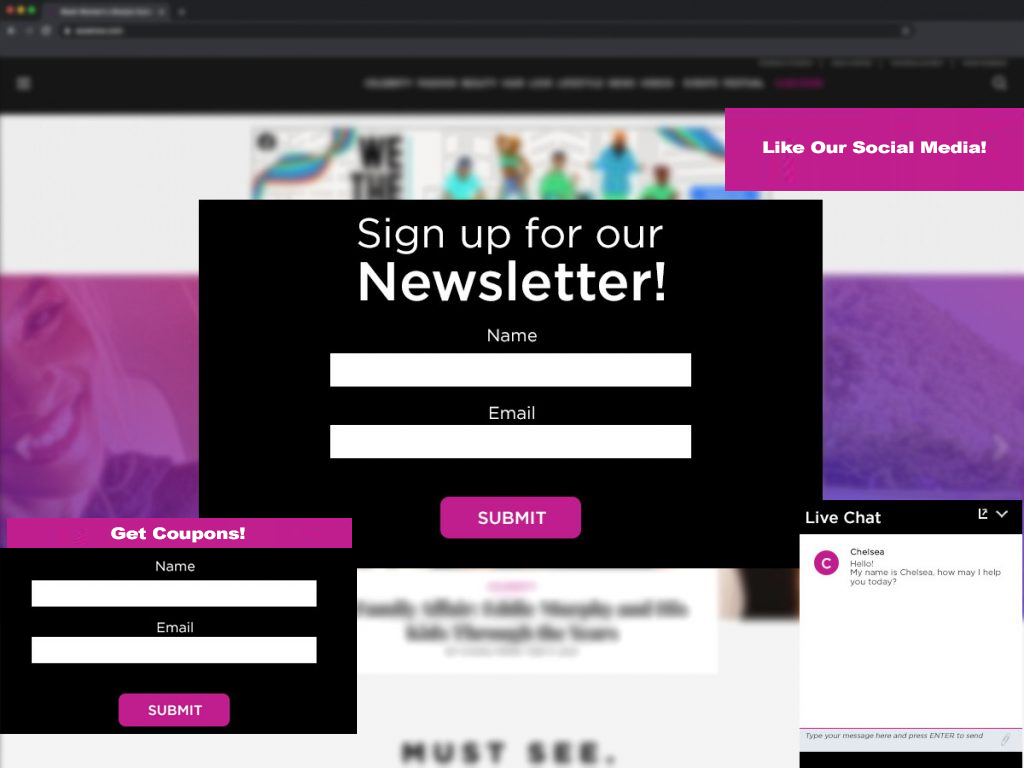Put the Brakes on High Bounce Rates
February 23, 2021

High bounce rates are not just a red flag for search engines, but also a leading indicator of design flaws.
Here’s what makes users hit the “back” button, and how to make sure your website really performs!
You have a gorgeous, clever site – it catches attention and contact information, and everything pushing to the site – ads, social media, and email, has a strong message. When you look at the analytics, though, there’s a glaring issue: your bounce rates are high. What constitutes a high bounce rate varies by industry, but the causes of most bounces can be traced back to a few possibilities. What can you do to track down the causes of high bounce rates? With a little analysis, we can determine what’s going on – and what you’ll want to do in order to get your site traffic to a healthy (and productive) state.

Avoid These Common Mistakes to Reduce Bounce Rates
The road to ruin is paved with good intentions. These mistakes can create confusion for your website visitors, cause visitors to lose interest, or cause a break in trust, resulting in a bounce.
-
Making the Site Too Chatty
- Your homepage serves a chatbox, they click to close it. The next page they visit serves a chatbox, and then a pop-up modal to sign up for the newsletter. The chatbox and pop-up terrorize them as they try to get what they want from your site. They leave. Don’t let it happen to you, be cognizant of how your modals and other pop-ups behave across your site.
- A particularly bad example would be a chatbox that automatically expands and starts a conversation. There’s a fine line between being helpful and being overbearing – don’t back users into an interaction.
-
Serving Something Other Than What They Came For
- You got a click! Whether it’s from an ad, a social post, or somewhere else – whoever clicked was expecting something. Make sure you give it to them. Analyze your calls to action and set the right expectations, and bounces could reduce.
- Visuals play into expectations as well. If you have a landing page, make sure it matches with the ad that’s pointing to it. A cognitive disconnect is the last thing you want as a user starts their visit. If they think they’re in the wrong place, they’re leaving.
- Another element in this avenue is form abuse. If you lead your user over to the contact page, don’t sign them up for your mailing list without their consent. An easy way to avoid this is to add a “Join our newsletter” checkbox on your contact form. They can opt in, and you could get a stronger lead from their reaching out.
-
Using Misleading Language and Berating Users
- A signup for your newsletter shows up on a page – but the options aren’t a simple “yes, sign me up” or “no, thank you”. Using language like “I don’t want to read this life-changing information” instead of something straightforward like “don’t sign me up” demeans users and can drive them off.
- Be careful of double negatives, double negatives are never not not good (that is, they’re bad). They’re especially egregious on checkboxes – and can mislead a user into agreeing to something they actually don’t want. Savvy users will spot them and leave, it’s better to double-check your language and avoid them altogether.

Root Out Problems and Get a Lower Bounce Rate
A lower bounce rate means your visitors are spending a longer time on your site – and that can improve the quality of your leads, help with retargeting, and more. As an ROI-driven agency, we love watching performance indicators like bounce rates – and tweaking our approach to get them into a healthy range. Whether it’s your homepage, a product page, or a special landing page, we want to hear about your traffic goals and let you in on a few personalized tips – free. Contact us and tell us more about your site, and see what you can do to help your bounce rate.


